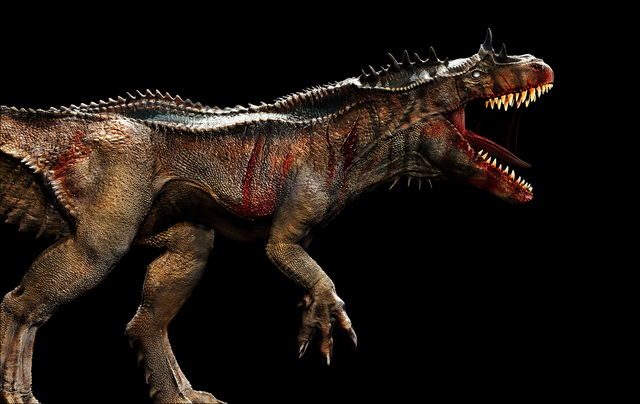Allosaurus

Allosaurus was a common carnivorous (meat-eating) dinosaur in North America during the late Jurassic and early Cretaceous period, approximately 154 to 135 million years ago. Allosaurus fossils have also been found in Africa and Australia.
Allosaurus was up to 39 feet (11.9 meters) long, and weighed approximately 1.7 tons.
Some scientists believe Allosaurus was too heavy to chase down prey, and therefore was probably a scavenger. However, others believe that Allosaurus may have been quite agile, and could even have hunted in packs to bring down giant herbivores (plant-eaters) such as Apatosaurus or Diplodocus.
The first Allosaurus fossil was incorrectly described as a "petrified horse hoof". In fact, it was a caudal vertebra (tail bone) of this dinosaur, although it was not recognized as such at the time. Using much more material, including a partial skeleton, Othniel C. Marsh published the first description of Allosaurus in 1877.

One of the most important Allosaurus specimens found, was discovered in Wyoming, in 1991. This animal, which has been nicknamed "Big Al", was actually smaller than average for its particular species of Allosaurus (it was probably not fully grown), and even though many bones showed signs of infection (which may have contributed to the animal's death), was very important because the skeleton was 95% complete. Furthermore, the same team which discovered "Big Al", also subsequently discovered a second well-preserved specimen, which has been nicknamed "Big Al Two". The discovery, and possible life-story of "Big Al", served as inspiration for a special episode of the BBC/Discovery TV series, Walking With Dinosaurs, entitled "The Ballad of Big Al".
Allosaurus has been designated the official state fossil of Utah, since 1988.